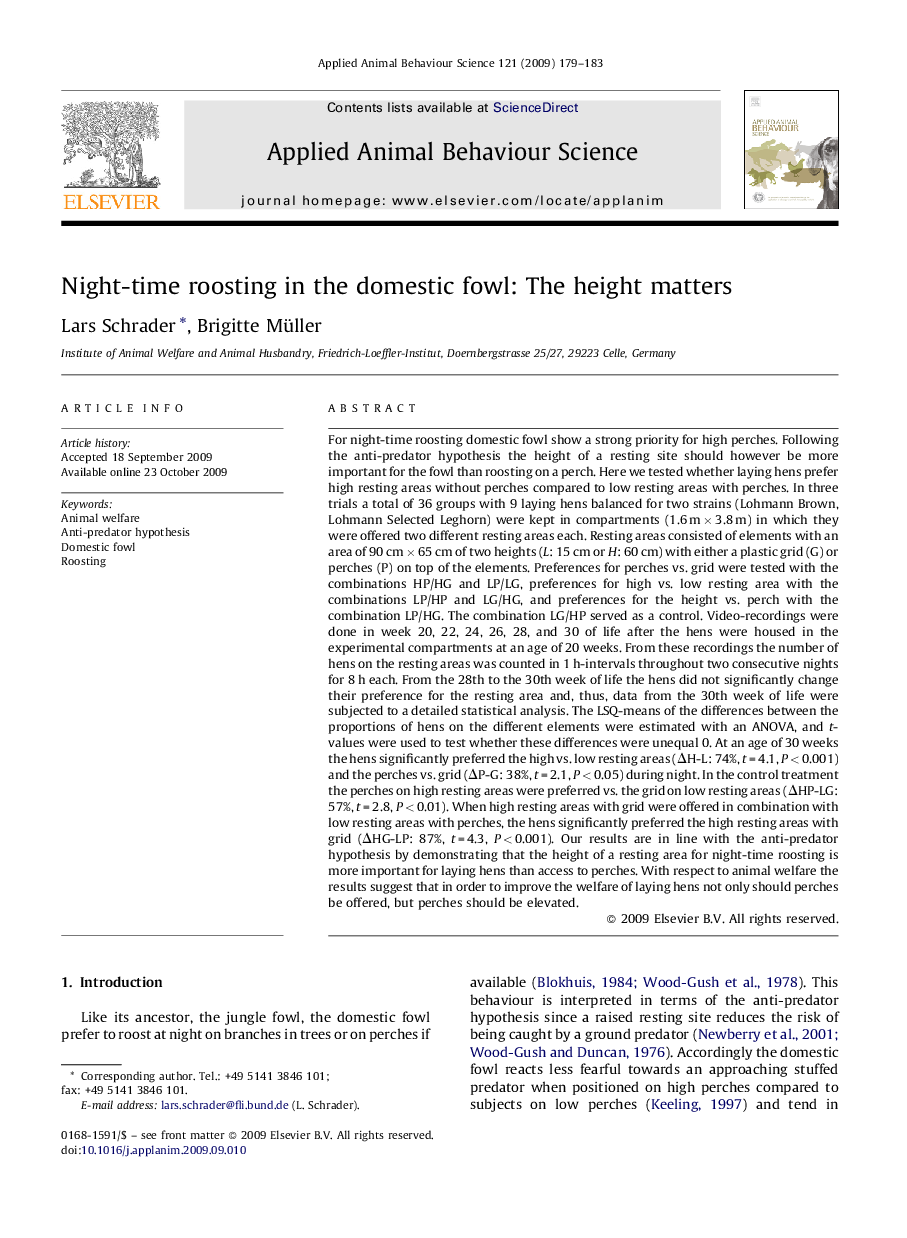| کد مقاله | کد نشریه | سال انتشار | مقاله انگلیسی | نسخه تمام متن |
|---|---|---|---|---|
| 4523339 | 1625405 | 2009 | 5 صفحه PDF | دانلود رایگان |

For night-time roosting domestic fowl show a strong priority for high perches. Following the anti-predator hypothesis the height of a resting site should however be more important for the fowl than roosting on a perch. Here we tested whether laying hens prefer high resting areas without perches compared to low resting areas with perches. In three trials a total of 36 groups with 9 laying hens balanced for two strains (Lohmann Brown, Lohmann Selected Leghorn) were kept in compartments (1.6 m × 3.8 m) in which they were offered two different resting areas each. Resting areas consisted of elements with an area of 90 cm × 65 cm of two heights (L: 15 cm or H: 60 cm) with either a plastic grid (G) or perches (P) on top of the elements. Preferences for perches vs. grid were tested with the combinations HP/HG and LP/LG, preferences for high vs. low resting area with the combinations LP/HP and LG/HG, and preferences for the height vs. perch with the combination LP/HG. The combination LG/HP served as a control. Video-recordings were done in week 20, 22, 24, 26, 28, and 30 of life after the hens were housed in the experimental compartments at an age of 20 weeks. From these recordings the number of hens on the resting areas was counted in 1 h-intervals throughout two consecutive nights for 8 h each. From the 28th to the 30th week of life the hens did not significantly change their preference for the resting area and, thus, data from the 30th week of life were subjected to a detailed statistical analysis. The LSQ-means of the differences between the proportions of hens on the different elements were estimated with an ANOVA, and t-values were used to test whether these differences were unequal 0. At an age of 30 weeks the hens significantly preferred the high vs. low resting areas (ΔH-L: 74%, t = 4.1, P < 0.001) and the perches vs. grid (ΔP-G: 38%, t = 2.1, P < 0.05) during night. In the control treatment the perches on high resting areas were preferred vs. the grid on low resting areas (ΔHP-LG: 57%, t = 2.8, P < 0.01). When high resting areas with grid were offered in combination with low resting areas with perches, the hens significantly preferred the high resting areas with grid (ΔHG-LP: 87%, t = 4.3, P < 0.001). Our results are in line with the anti-predator hypothesis by demonstrating that the height of a resting area for night-time roosting is more important for laying hens than access to perches. With respect to animal welfare the results suggest that in order to improve the welfare of laying hens not only should perches be offered, but perches should be elevated.
Journal: Applied Animal Behaviour Science - Volume 121, Issues 3–4, December 2009, Pages 179–183